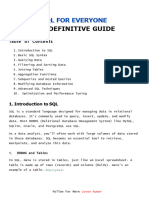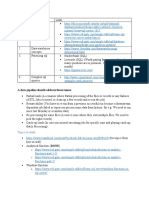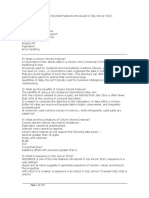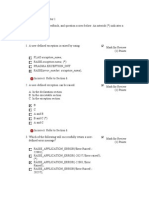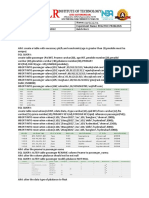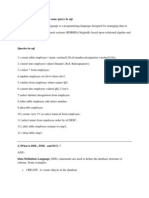100% found this document useful (1 vote)
123 views13 pagesSQL for Aspiring Data Scientists
SQL is an important skill for data scientists to extract and prepare data from multiple sources for machine learning models. Some key reasons include: (1) In industry, datasets often need to be prepared from multiple tables using SQL queries involving joins, aggregations, etc. (2) As a machine learning engineer experiments with different features, SQL is useful to try new feature extractions. (3) SQL is needed for general analytics on big data beyond the limitations of tools like Excel. The document then provides examples of SQL case studies and questions often asked in interviews.
Uploaded by
Himanshu PatidarCopyright
© © All Rights Reserved
We take content rights seriously. If you suspect this is your content, claim it here.
Available Formats
Download as PDF, TXT or read online on Scribd
100% found this document useful (1 vote)
123 views13 pagesSQL for Aspiring Data Scientists
SQL is an important skill for data scientists to extract and prepare data from multiple sources for machine learning models. Some key reasons include: (1) In industry, datasets often need to be prepared from multiple tables using SQL queries involving joins, aggregations, etc. (2) As a machine learning engineer experiments with different features, SQL is useful to try new feature extractions. (3) SQL is needed for general analytics on big data beyond the limitations of tools like Excel. The document then provides examples of SQL case studies and questions often asked in interviews.
Uploaded by
Himanshu PatidarCopyright
© © All Rights Reserved
We take content rights seriously. If you suspect this is your content, claim it here.
Available Formats
Download as PDF, TXT or read online on Scribd
/ 13


















